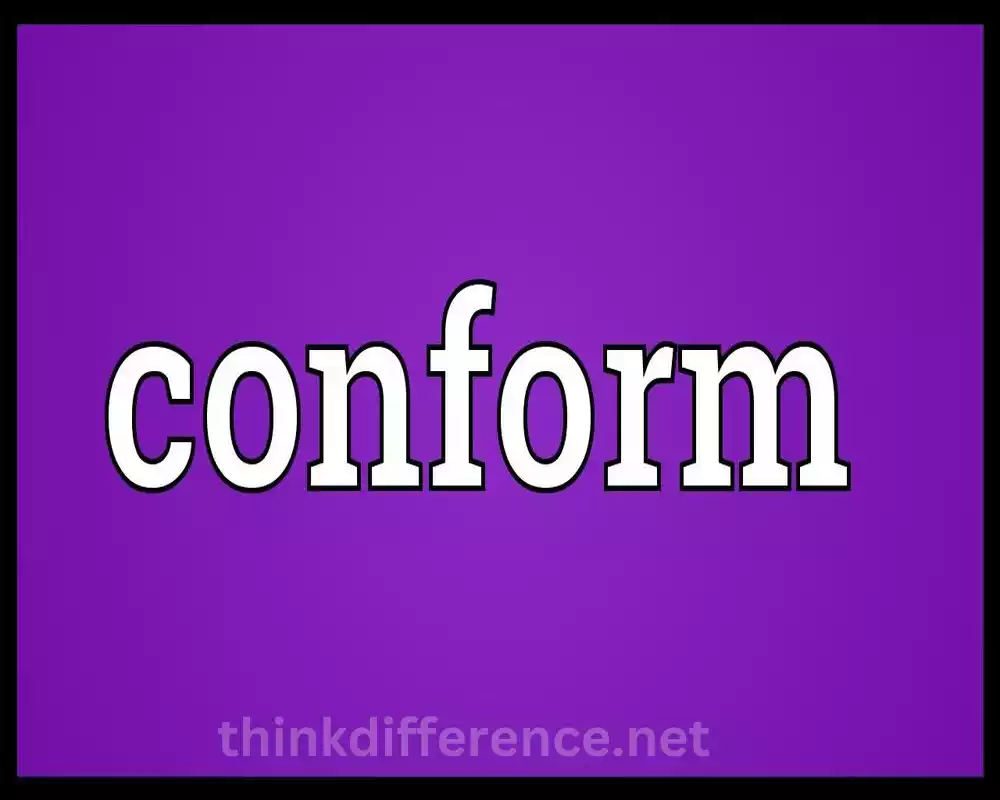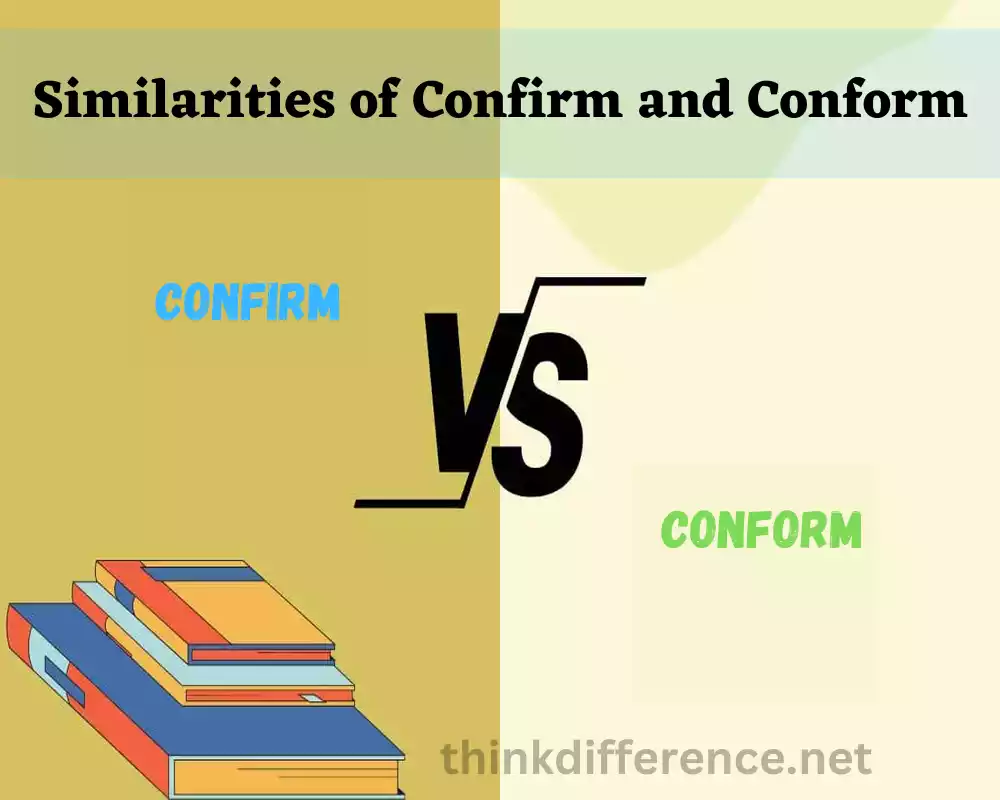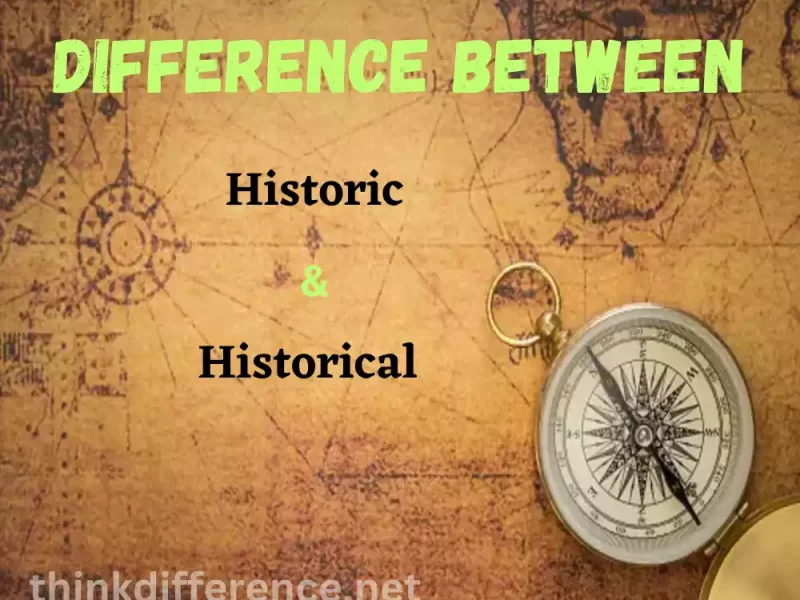“Confirm” and “Conform” have different implications in different circumstances. Although their words appear similar, their significance and interpretation vary significantly. Understanding these distinctions is key for effective communication across professional and social environments.
Definition of Confirm and Conform
Confirm: Confirm refers to the action of ensuring the accuracy, truth or validity of something. It involves verifying or validating information, plans or details to establish certainty or agreement. Confirmation can be done through various methods such as verbal or written communication, documentation or evidence.
Conform: Conform means to comply with or adhere to standards, rules, expectations or social norms. It involves adjusting one’s behavior, actions or beliefs to fit in or align with the prevailing guidelines or accepted practices. Conformity can be related to social behavior, organizational rules, cultural norms or regulatory requirements. It often implies a willingness to follow established norms or expectations.
Importance of understanding the difference between Confirm and Conform
Understanding the difference between confirm and conform is integral for efficient communication and decision-making in everyday situations. Here are a few reasons to understand their distinction:
- Clarity in communication: Using the appropriate term when expressing yourself or seeking clarification helps to ensure that your message is accurately understood. By distinguishing between confirm and conform, you can avoid confusion and potential misinterpretation.
- Accuracy and reliability: Confirming information is essential for ensuring accuracy, truthfulness and reliability. By confirming facts, details or data, you can avoid spreading misinformation or making decisions based on incorrect information. Adherence to established standards or guidelines ensures consistency and trust across a range of settings for instance, following industry recommendations or complying with legal regulations.
- Decision-making: Understanding the difference between confirm and conform is valuable when making decisions. Confirming information allows you to gather accurate data and validate its credibility, which in turn enables you to make well-informed decisions. Conforming, on the other hand, involves considering the established norms or guidelines and aligning your actions or decisions accordingly, which can be essential in areas such as compliance or social contexts.
- Personal autonomy and individuality: Recognizing the distinction between confirm and conform helps you maintain your personal autonomy and individuality. By confirming information, you can critically evaluate it and make independent judgments. Understanding when to conform or when not to conform allows you to strike a balance between fitting in with social expectations and expressing your unique perspectives or beliefs.
- Effective problem-solving: Differentiating between confirm and conform can enhance your problem-solving skills. Confirming information helps you identify the root cause of an issue accurately, whereas conforming to established practices may provide valuable insights or solutions for resolving problems within a given context. By understanding which approach is appropriate, you can navigate problem-solving more effectively.
Understanding the difference between confirm and conform is essential for clear communication, accurate decision-making, maintaining individuality, and effective problem-solving. By using these terms correctly, you can enhance your ability to convey information, validate facts, comply with standards and navigate various situations with clarity and confidence.
What is Confirm?
Confirm is a verb used to establish, verify or demonstrate something’s truthfulness, accuracy or legitimacy. When we confirm something we take steps to verify its authenticity. This could involve taking an examination of facts, figures or details that support their legitimacy as reliable information sources.

Confirmation can be applied in various situations, such as:
- Confirming information: This involves double-checking facts, figures or data to ensure their correctness. For example, confirming the accuracy of a report or verifying the details of an event.
- Confirming a reservation or appointment: This entails verifying the details of a booking or appointment to ensure that it is confirmed and scheduled correctly. It could involve contacting a hotel or restaurant to confirm a reservation or confirming a meeting time with a colleague.
- Confirming a plan or agreement: This involves ensuring that a plan, agreement or arrangement is agreed upon and understood by all parties involved. It may include confirming the terms of a contract or verifying the specifics of a project plan.
Confirming something often involves communication with relevant parties to obtain acknowledgment or validation. Confirmation can be achieved using various means, including verbal (via phone calls or conversations), written (through letters or official documents) or both methods simultaneously.
Confirmation is key in building trust, reliability and certainty throughout our world whether in personal relationships or daily activities.
What is Conform?
Conforming is used as an expression to refer to adhering to or conforming with rules, standards and expectations as well as social norms and expectations. When complying, one alters his/her behavior or actions accordingly with accepted guidelines or practices that have become accepted within society or culture norms and regulations. Conformity may take place across various situations such as social behavior within organizations as well as cultural regulations that exist among populations at large.

Here are a few examples of how conforming can manifest:
- Social conformity: Socialization refers to the capacity for altering one’s behaviors, thoughts or values in order to conform with those of a group or society as a whole. It involves adhering to social norms and expectations to gain acceptance or avoid rejection. For instance, conforming to a dress code at a formal event or adopting the manners and customs of a specific culture when traveling abroad.
- Conforming to rules and regulations: This involves complying with established rules, guidelines or laws within a specific context. It could include following workplace protocols, obeying traffic laws or adhering to safety regulations in a manufacturing facility.
Conformity often stems from an individual’s desire to meet expectations or norms set out by society, but sometimes this comes at the cost of individualism or preferences that differ. It can be influenced by factors such as societal pressure, group dynamics, fear of exclusion or the desire for approval.
It’s important to note that while conformity can help maintain social order and facilitate cooperation, excessive conformity without critical thinking or questioning can limit creativity, innovation and individual expression.
Conforming entails adjusting one’s behavior, actions or beliefs to align with standards, rules, expectations or social norms prevailing in a particular context. It involves compliance or obedience to established guidelines or practices.
Differences of Confirm and Conform
There are several key differences between confirm and conform. Let’s explore them:
1. Definition:
- Confirm: Confirming involves verifying or validating the accuracy, truth or validity of something.
- Conform: Conforming refers to complying with or adhering to established standards, rules, expectations or social norms.
2. Purpose:
- Confirm: The purpose of confirmation is to establish certainty, agreement or validation.
- Conform: The purpose of conformity is to comply with or align to prevailing norms, standards or expectations.
3. Focus:
- Confirm: Confirmation focuses on ensuring accuracy, truth or reliability.
- Conform: Conformity focuses on fitting in or aligning with established standards or norms.
4. Actions:
- Confirm: Confirming involves verifying or validating information, plans or details.
- Conform: Conforming involves adjusting one’s behavior, actions or beliefs to fit in or align with established standards or expectations.
5. Individual vs. Group:
- Confirm: Confirmation is often an individual act of verifying or validating.
- Conform: Conformity typically involves aligning with a group or societal norms.
6. Critical Thinking:
- Confirm: Confirmation may require critical thinking and analysis to ensure accuracy or validity.
- Conform: Conformity often involves following established guidelines without necessarily questioning them.
7. Independence vs. Compliance:
- Confirm: Confirming allows for independent assessment or validation.
- Conform: Conforming involves compliance and adherence to established norms or expectations.
8. Decision-Making:
- Confirm: Confirmation helps in making well-informed decisions by ensuring accuracy.
- Conform: Conformity influences decision-making by aligning actions or choices with established standards or norms.
9. Context:
- Confirm: Confirmation can apply to various contexts, such as information, plans, agreements or reservations.
- Conform: Conformity can apply to social behavior, organizational rules, cultural practices or regulatory requirements.
Understanding these differences is important to use the terms accurately and navigate situations effectively. By recognizing whether confirmation or conformity is appropriate, individuals can make informed decisions, ensure accuracy, maintain individuality and navigate social and professional contexts successfully.
Similarities of Confirm and Conform
While confirm and conform have distinct meanings and purposes, there are some similarities between the two concepts.

Here are a few points where these terms share similarities:
- Agreement: Both confirm and conform involve a level of agreement. Confirming something often implies reaching an agreement on its accuracy or validity. Conforming also implies aligning with established standards or norms, which can be seen as a form of agreement with those guidelines.
- Validation: Both confirm and conform involve a form of validation. Confirming information or plans involves validating their accuracy or truthfulness. Conforming involves validating one’s behavior or actions to align with established norms or standards.
- Compliance: Both confirm and conform involve compliance to some extent. Confirming information requires compliance with verification methods or processes to ensure accuracy. Conforming involves compliance with established standards, rules or social expectations.
- Communication: Both confirm and conform often require communication. Confirming information or plans often involves communicating with others to validate or verify details. Conforming to norms or standards may also involve communication to understand and align with the expectations of a particular group or context.
- Decision-making: Both concepts can impact decision-making. Confirming information or data assists in making informed decisions based on accurate and reliable sources. Conforming to standards or norms may influence decision-making by considering the expectations or requirements set by a particular context.
While there are these similarities, it is important to recognize and understand the differences between confirm and conform to use the terms accurately in appropriate contexts. Recognizing when to seek confirmation and when to conform helps individuals navigate situations effectively and make informed decisions while aligning with relevant guidelines or expectations.
The Potential Pitfalls of Over confirming or Overconforming
Over confirming or overconforming can have potential pitfalls that individuals should be mindful of. Here are some possible drawbacks of excessive reliance on confirmation or conformity:
- Lack of Critical Thinking: Over confirming or relying solely on confirmation without engaging in critical thinking can limit personal growth and development. It can lead to a passive acceptance of information without questioning its validity or exploring alternative perspectives. Critical thinking allows for independent analysis and evaluation, fostering intellectual growth and creativity.
- Inhibition of Individuality: Overconforming to societal norms or expectations can stifle individuality and authentic expression. When individuals excessively conform to external standards, they may suppress their unique thoughts, values and ideas. Personal development may be compromised when there are limited opportunities for self-exploration and developing an individual identity.
- Reduced Creativity and Innovation: Over confirming or overconforming can impede creativity and innovation. It discourages individuals from challenging existing ideas, norms or practices. Creativity arises from our eagerness to uncover unexplored opportunities, challenge the status quo and push their thinking further than it ever has before. Overreliance on confirmation or conformity may hinder the generation of fresh ideas or unconventional approaches.
- Limited Personal Autonomy: Excessive conforming can restrict personal autonomy. When individuals conform too rigidly, they may relinquish their ability to make independent choices or decisions. Personal development often necessitates asserting one’s individualism and owning their beliefs, actions and values.
- Missed Opportunities for Growth: Over confirming or overconforming can lead to missed opportunities for personal growth and learning. It may prevent individuals from exploring alternative perspectives, taking calculated risks or challenging their own assumptions. Growth often occurs when individuals step outside their comfort zones and embrace new experiences.
- Groupthink and Echo Chambers: Overconforming within a group can lead to groupthink and echo chambers. When everyone in a group unquestioningly conforms to the same ideas or beliefs, critical analysis and diverse perspectives may be suppressed. This can hinder personal growth by limiting exposure to different viewpoints and inhibiting intellectual stimulation.
Balance must be struck between critical and confirmation thinking as well as between individuality and conformity. By being mindful of the potential pitfalls of over confirming or overconforming, individuals can foster personal growth by embracing independent thought, self-expression and the exploration of diverse perspectives.
Conclusion
Confirm and Conform may appear similar in sound, but their meanings and applications are distinct. Understanding the difference between these words is essential for clear and effective communication. By using “confirm” when verifying information and “conform” when indicating compliance, we can minimize confusion and ensure our messages are accurately conveyed.



